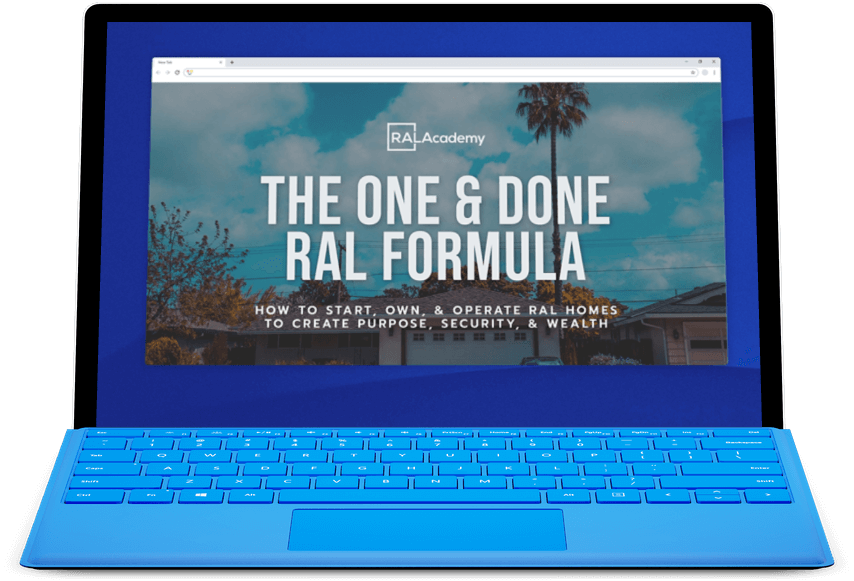Investing in senior housing for higher returns is what many entrepreneurs are doing in the assisted living industry.
Daily, nearly 10,000 Baby Boomers turn 65 and 4,000 people turn age 85. What does that mean to an investor? It means opportunity.
The rowdy crew is aging, joining millions already basking in the golden sunlight of the senior years. Yet, true to their fashion, baby boomers are not so golden in their approach to senior living. They want it, as they did all other things, their way.
Baby boomers are transforming the industry of senior living with activism, connection, and meaning. They refuse removal from thriving daily life.
They want to live in a community, experience life with others, and go and come and they please. And they are willing to pay for it
Residential assisted living rises to the forefront as the demand for independent senior living outside traditional institutional settings rises. Baby boomers want to be in a community: city, town, suburb – it does not matter.
They do not, however, want to be in a nursing facility.
Baby boomers understand they may need or presently require assistance. If they must vacate their home of 40 years, it must be to go to another house. A place where people are warm, inviting, engaged, and thriving.
They do not want the quiet sleepy nature of traditional nursing care but prefer to live with others who want the same thing.
Baby boomers do not ride off into the sunset; they take a plane to a resort instead.
The United States Census Bureau projects the elderly population of the nation to double between 2020 and 2050.
Are you an investor seeking long-term gains? Well, it appears, long-term care, specifically residential assisted living, should be a central part of your portfolio.
WHAT’S DRIVING THE DEMAND?
Senior living facilities, such as residential assisted living, are being driven by a host of factors.
These factors affect families, not only the boomer but their adult children, significantly. Here’s a shortlist for your consideration:
- Large two-story homes are no longer feasible to maintain.
- Increasing taxes make homes too expensive to sustain financially.
- Two-story homes, even split-level homes, have stairs that pose a risk.
- Adult children no longer reside in the area.
- An ailing spouse requires more care.
- A surviving spouse is dealing with loneliness.
- Manageable health conditions that need attention.
- Changing demographics in the community.
Independent and fearless, baby boomers do not want to be a burden to adult children. They long to see their adult children thrive, grow, and raise responsible citizens, their grandchildren.
While relishing independence, baby boomers want to be a part of the family, however. They want to live in proximity but not with their adult children.
Thus, residential assisted living homes make this possible.
As mentioned earlier, the shift in age demographics from working adults to senior citizens in America is riveting.
Think about it.
The oldest of baby boomers are turning 73 or 74 in 2021. The United States population presently over 80 years of age is approximately 15 million. Therefore, by 2035, nearly 80 million people will be 65 and older 2035 – this is driving demand.
THE OPPORTUNITY
With demographics as a foundation, investors have a captive audience. They have a customer looking for a place to reside.
Occupancy will not be an issue, as long as the home is well kept and run with excellence.
The CBRE’s U.S. Seniors Housing and Care Investor Survey of 2020 provides some assurance to investors.
Nearly 53% of respondents presently owning senior living facilities expect occupancy to increase over the next year. Why?
- People want to age in a home as opposed to a facility.
- People want active living and community involvement.
- People are living much longer now than ever before in American history.
- Seniors are less apprehensive about senior living because of the variety of models available.
The time is now. Senior living is a need throughout the United States, and investors who delve into the industry with knowledge and strategy will thrive for decades to come. The time is now for investors to get involved. Of course, knowledge is more than power in senior living. It is imperative.
Owning and operating an assisted living home demands preparation.
The Residential Assisted Living Academy trains, educates, and prepares investors to engage in the most exciting and impactful undertaking – senior living.
SENIOR LIVING: A VARIETY OF OPTIONS
No longer is senior living synonymous with nursing homes. That paradigm has shifted drastically. Senior living is now associated with living. Seniors are thriving people, full of wisdom, hope, and purpose.
Contemporary senior living is like four distinct categories.
- Independent Living
- Assisted Living
- Skilled Nursing Facility
- Memory Care Homes
Independent Living
Known to the public by multiple names: senior apartment, retirement communities, active adult living, 55 and over the neighborhood – independent living facilities are “popping up” across America. Why?
Seniors like the idea of living an independent life, especially baby boomers. They do not want to be coddled, hounded, or scheduled. They want to go and come as they please.
The Villages, Florida, is a prime example. Seniors want to be able to:
- Wake up when they are ready.
- Attend a club meeting.
- Participate in community service.
- Play golf or miniature golf.
- Swim for fitness and recreation.
- Attend exercise class.
- Attend game nights such as bingo, poker, or the like.
- Visit the doctor onsite.
- Entertain family and friends.
- Attend church, synagogue, or mosque.
In short, they want to live an unburdened life of home maintenance and tax responsibility. Seniors want to thrive and age with dignity amongst like-minded friends.
If they need assistance somehow, many would prefer to hire help to enter the home or apartment, not take up residence in a nursing facility.
This senior living model does not offer medical care or nursing support, so seniors who thrive in this situation are healthy and desire an easier way of life.
Assisted Living
Assisted living facilities offer more support and various levels of care residents require. These facilities are ideal for those who need support in engaging in daily activities.
Residents here may need help with:
- Cooking
- Cleaning
- Medication Administration
- Driving
- Laundry
- Personal Care
Again, the idea of assisted living is assistance – this is not comprehensive care. These residents need support in living but otherwise can carry on living and making decisions for themselves.
Seniors residing in assisted living homes receive 24-hour support and access to care as they need it. Independence is promoted and encouraged, but residents can obtain help when they need it.
They are not alone.
Living arrangements in an assisted living facility are numerous.
- Individual room
- Shared apartment with a roommate.
- Shared quarters, where three or four reside in a single apartment.
Social activities are offered extensively in assisted living facilities, with housekeeping, laundry, and meals included.
Skilled Nursing Facility
While least liked, it remains a necessity and with good reason.
Skilled nursing facilities (SNF) are ideal for those seniors in need of comprehensive primary medical care. Living in an SNF is for those who require:
- Feeding
- Bathing
- Dressing
- Extensive Medical Care
- Medication Administration
- Continual physician visits to monitor condition(s)
Living arrangements in SNFs have changed more recently. Residents have the option to live in a private room or have a roommate.
In many SNFs, the rooms have been updated from the traditional hospital setting to reflect more of an apartment; yet, with equipment readily available to support a resident’s health needs.
In addition to 24-hour nursing care, pharmaceutical and laboratory services are available onsite.
If patients require continued monitoring of health conditions, an SNF may very well be the ideal location.
Memory Care Homes
With baby boomers aging at such a rapid rate, the need for specific facilities for memory care is all too obvious.
Memory care facilities are niche’ residences where those with Alzheimer’s and other dementias can live with dignity and safety. These residents are no longer safe at home, and home caregivers can no longer provide the care needed to sustain the resident.
Memory care homes allow the resident freedom without wandering.
Nutrition and activities enable people with dementia and medication administration to achieve the best results.
As Alzheimer’s patients progress in the disease process, activities and behavioral modifications are beneficial. Staff in these homes receive special training to identify and support these residents properly.
Rooms in these homes are conservatively furnished and decorated. Items from home are ideal. Pictures, and sometimes even furniture are brought in to reduce stress upon the resident.
The more familiar the place is, the better the resident will adjust.
Memory care is a home. It is a place where people with dementia can age with dignity, even as their memories slowly fade.
THE TIME IS NOW
Investors, owners, entrepreneurs should know that senior housing returns are among the highest in commercial real estate.
Senior living homes are poised for growth as the population continues to boom in this demographic.
- Are you seeking a long-term investment?
- Are you looking for a foundational investment to uphold your portfolio?
- Are you longing for a measured risk with significant upside?
Senior housing may very well be an investment opportunity for you. Get involved today.
The Residential Assisted Living Academy teaches investors the fundamentals and the intricacies of this industry during an initial 3-day course.
However, experts at the RAL Academy make continued support available to every student.
Contact www.ResidentialAssistedLivingAcademy.org today and begin a journey that will yield returns for many years to come.




